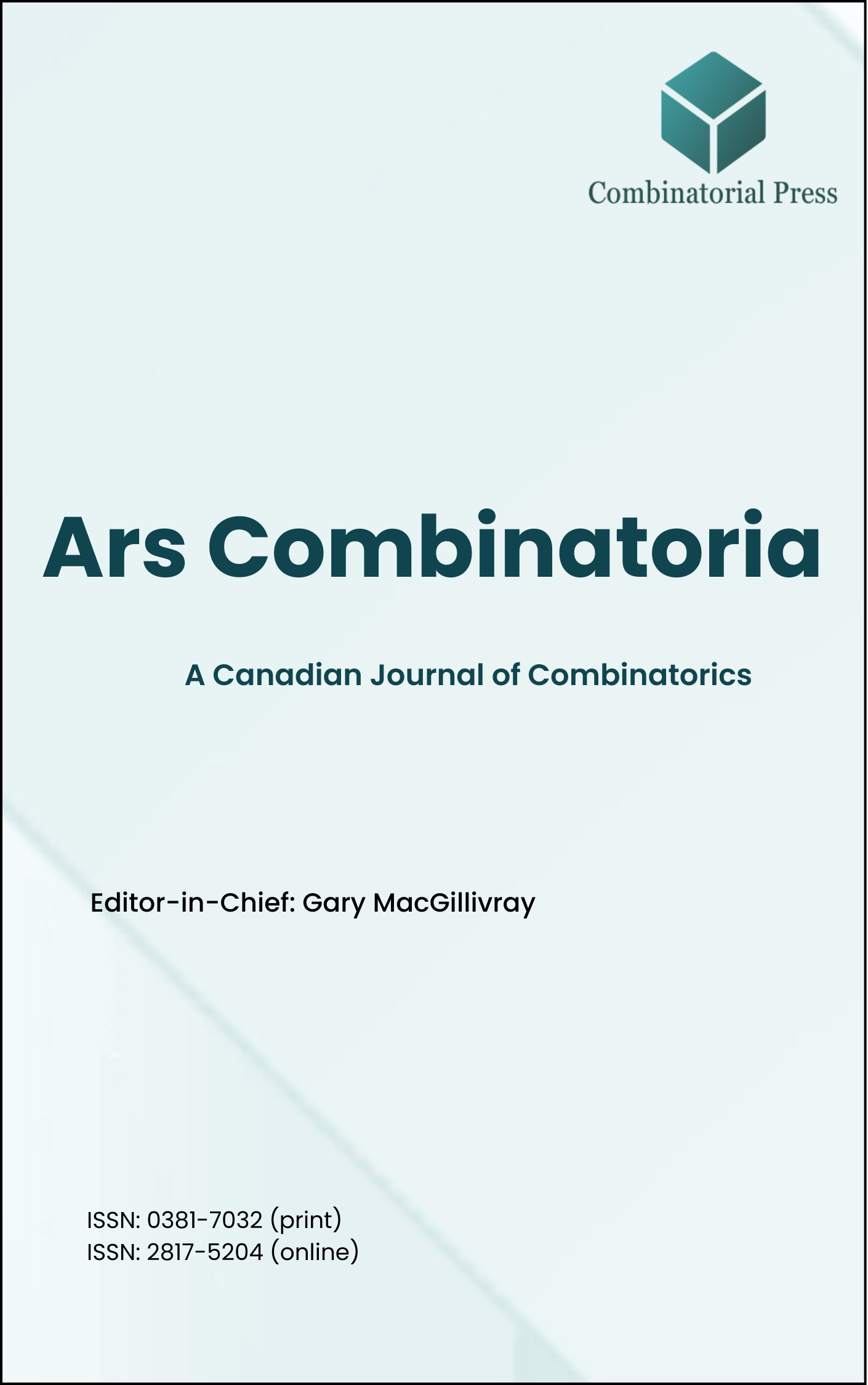
Ars Combinatoria
ISSN 0381-7032 (print), 2817-5204 (online)
Ars Combinatoria is the oldest Canadian Journal of Combinatorics, established in 1976. The journal is dedicated to advancing the field of combinatorial mathematics through the publication of high-quality research papers. From 2024 onward, it publishes four volumes per year in March, June, September and December. Ars Combinatoria has gained recognition and visibility in the academic community and is indexed in renowned databases such as MathSciNet, Zentralblatt, and Scopus. The Scope of the journal includes Graph theory, Design theory, Extremal combinatorics, Enumeration, Algebraic combinatorics, Combinatorial optimization, Ramsey theory, Automorphism groups, Coding theory, Finite geometries, Chemical graph theory but not limited.
Information Menu
- Research article
- Full Text
- Ars Combinatoria
- Volume 101
- Pages: 321-331
- Published: 31/07/2011
A minimal separator of a graph is an inclusion-minimal set of vertices whose removal disconnects some pair of vertices. We introduce a new notion of minimal weak separator of a graph, whose removal merely increases the distance between some pair of vertices.
The minimal separators of a chordal graph
- Research article
- Full Text
- Ars Combinatoria
- Volume 101
- Pages: 309-320
- Published: 31/07/2011
A monitor is a computer in the network which is able to detect a fault computer among its neighbors. There are two stages of monitoring fault computer:(1) Sensing a fault among its neighbors and (2) Locating the fault computer.
A sensitive computer network requires double layer monitoring system where monitors are monitored. This problem is modeled using the graph theory concept of dominating set. In graph theory, there are two variations of domination concepts which represent double layer monitoring system.One concept is locating-domination and the other is liar domination.
It has been recently demonstrated that circulant network is a suitable topology for the design of On-Chip Multiprocessors and has several advantages over torus and hypercube from the perspectives of VLSI design. In this paper, we study both locating-domination and liar domination in circulant networks. In addition to characterization of locating-dominating set and liar dominating set of circulant networks, sharp lower and upper bounds of locating-dominating set and liar dominating set of circulant networks are presented.
- Research article
- Full Text
- Ars Combinatoria
- Volume 101
- Pages: 301-307
- Published: 31/07/2011
We obtain some new examples of weakly distance-regular digraphs. Moreover, a class of commutative weakly distance-regular
digraphs of valency
- Research article
- Full Text
- Ars Combinatoria
- Volume 099
- Pages: 383-398
- Published: 30/04/2011
A new variation of the coloring problem,
- Research article
- Full Text
- Ars Combinatoria
- Volume 099
- Pages: 399-413
- Published: 30/04/2011
We introduce the notion of fuzzy
- Research article
- Full Text
- Ars Combinatoria
- Volume 099
- Pages: 377-382
- Published: 30/04/2011
Let
- Research article
- Full Text
- Ars Combinatoria
- Volume 099
- Pages: 365-375
- Published: 30/04/2011
In
- Research article
- Full Text
- Ars Combinatoria
- Volume 099
- Pages: 519-529
- Published: 30/04/2011
Let
- Research article
- Full Text
- Ars Combinatoria
- Volume 099
- Pages: 503-517
- Published: 30/04/2011
For over a decade, there has been considerable research on codes over
- Research article
- Full Text
- Ars Combinatoria
- Volume 099
- Pages: 487-502
- Published: 30/04/2011
Acharya and Hegde have introduced the notion of strongly





